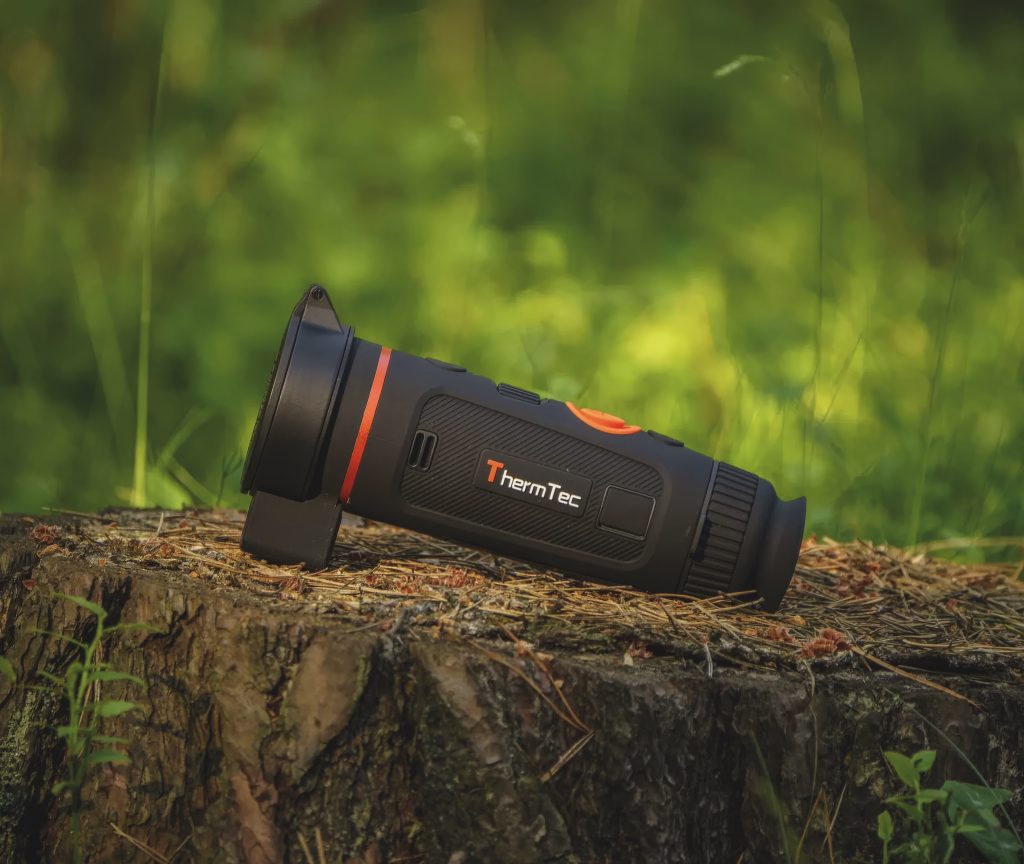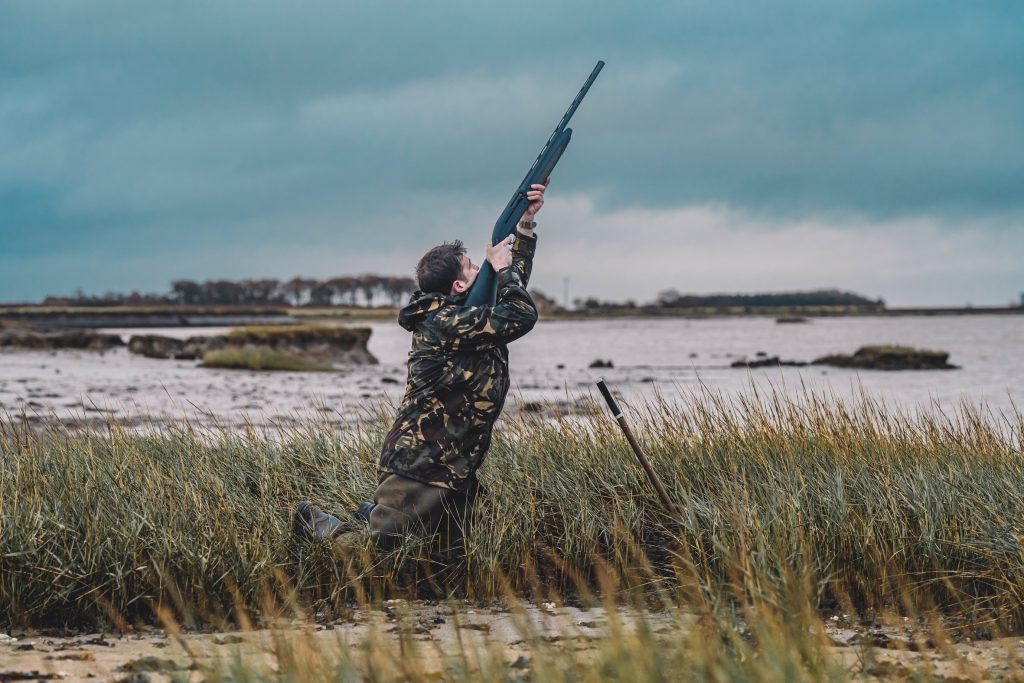Win CENS ProFlex DX5 earplugs worth £1,149 – enter here
Lead alternatives for deer stalkers
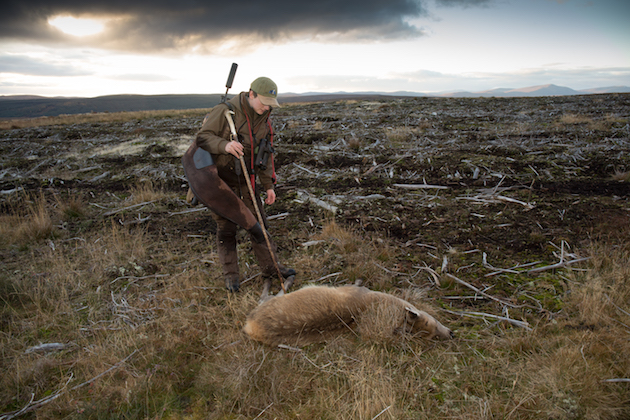 Shot hind deer
Shot hind deer
Investigating lead alternatives for deer
The lead versus non-toxic debate is nothing new to those of us actively involved in the management of deer. This isn’t going to be an in-depth technical analysis of the minutiae of bullet design. It is an insight into my experiences using various non-toxic rounds at the coalface throughout the most recent stag and hind seasons.
First, though, I want you to cast your mind back; all the way back to 40,000BC to our hunting ancestors.
Geographically, we’re leaving chilly Britain and heading to what is now the warm, sunny Dordogne in the south of France. Then, too, it had welcoming weather; the interglacial period resulted in a mild climate. With lush forests, flowing rivers and abundant game, it was a very good place to be a prehistoric human.
Now picture a hunting party. A group of half a dozen individuals making their way up the river valley. Two of the youngest in the group had been sent to scout ahead, returning with the news that a herd of deer was grazing at a bend in the river.
The group proceeded carefully, spears sharpened to thrust at prey in an ambush. One of the party was thoughtful. They had a different kind of stick, a piece of antler with a notch carved out of one end that cradled their spear. They had tried it and it had worked. So they practised refining their technique and the tool.
There was much ribbing and eye-rolling from their clan. “Look, we’ve always used these spears to hunt and they work.” However, the group dispersed. Our hero moved forward, creeping through the brush.
Choosing a beast, they notched the spear in its holder, drew their arm back and launched the dart. It flew at unprecedented speed, striking a deer in the side, causing it to run forwards and topple at the water’s edge.
The device being tried was the atlatl — a revolutionary piece of equipment fo our hunting forebears. There are many beautiful examples in various museums and one of the oldest remains in France, named for its carvings “le faon aux oiseaux” — the fawn with birds.
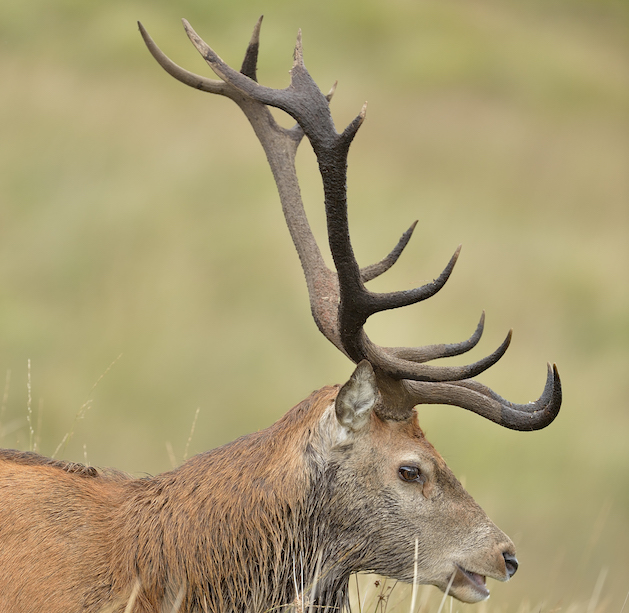
A Royal 12 point stag
Accuracy
The atlatl allowed hunters to launch spears at animals from up to 130m away, ensuring high levels of accuracy at around 55m, and sending the dart flying through the air at more than 70mph. It would undoubtably have been much safer too, instead of having to get up close and personal with prey, the hunter could stay back, avoiding flailing limbs and horns.
This tool evolved through experimentation and our drive to source large amounts of animal protein. The current evolution of equipment and ammunition is sadly driven less by the necessity of the hunt and experimentation and more by public opinion and feelings.
There is undeniable evidence that when ingested by a mammal or bird lead can cause a range of issues, from behavioural changes to reproductive difficulties to death.
I’ve shot successfully with lead for many years. Much like the atlatl, lead ammo has been honed over the past couple of centuries to today’s sleek and efficient bullets. Its appeal has been in its efficacy in ensuring a clean kill — fragmenting on penetration, leaving a large wound channel and causing maximum internal damage — and in its cost, less than half that of many non-toxic alternatives. Copper rounds simply haven’t had quite the same attention. When they first appeared on the scene the results showed something you wouldn’t want to rely on, especially with the smaller calibres such as .243 and .223. Given the weight difference, copper had to be longer, reducing room for powder and thus overall killing power.
Happily, the clever people at Sako, Hornady, Federal and the rest have been working on these issues for some time to offer lead alternatives for deer. The new wave of ammunition available to us is a world apart from earlier offerings.
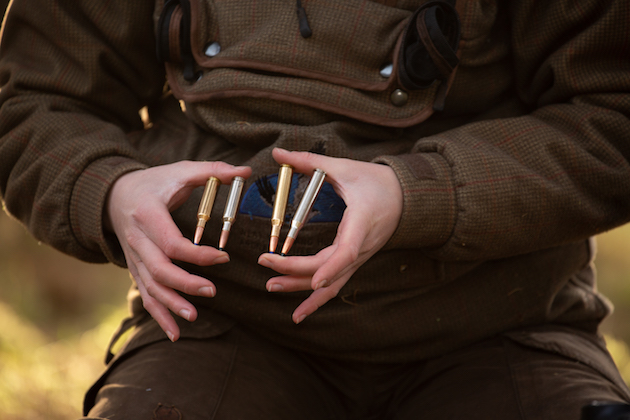
The non-toxic ammunition worked well on stags
Stability
Over the past few months I’ve trialled a range of rounds from Sako: the .270 Win Powerhead II (Barnes Tipped TSX) 110-gr, 6.5 Creedmoor Powerhead II (Barnes Tipped TSX) 120-gr, and .243 Win Powerhead II (Barnes Tipped TSX) 80-gr. I’ve also tried the Federal Premium 6.5 Creedmoor 120-gr Trophy Copper and Premium.270 Win 130-gr Trophy Copper. I used the Federal and Sako 6.5 Creedmoor 120-gr primarily for the stag season. They are new rounds to me and I was pleasantly surprised at the Creedmoor’s speed and stability. It’s very accurate and had no problem knocking stags over.
Two things became apparent very quickly, regardless of calibre. First, you absolutely need a good, absorbent backdrop. I cannot stress this enough. Unlike lead, which expands and fragments on impact, copper doesn’t. There are some clever design tricks to make the round peel open like a flower but it will travel through the animal almost every time and you will need something to catch it.
This brings me to my second observation: reaction to shot. Unless you’re shooting a beast in the neck — which is not best practice — reaction to shot is very different from lead. In a typical heart/lung shot with a .270 lead round on a stag broadside, he will leap at the shot. The leg of the shot shoulder will drop, his head will tilt and he will run forward, usually with the shot leg dangling, before pitching forward on to the ground.
I had a few instances this season where the client took a textbook “boiler room” shot and the deer merely flinched, only beginning to stumble around as he took a step forward. It took markedly longer for him to fall. Upon gralloching, it was clear to see the shot had gone through both heart and lung. Colleagues who’ve hunted with a bow said the reaction is quite similar to arrow strike; I can only assume the slower response is due to the slow strike and less extensive wound channel.
I will add at this point there doesn’t appear to be any more stress than I’ve seen in deer shot with other rounds — it simply takes some time to tune into.
Both lots of .270 are capable of getting the job done. We’ve used them more during the hind seasons. The Sako 110-gr is a remarkably fast round, stable and punchy, which is what I’m looking for when we have to cull multiple animals from a group. I prefer it to the Federal 130-gr.
Colleagues who work managing deer within the forestry sector — who have been contractually obliged to use lead-free ammunition for some years now — also speak well of Sako’s .270.
Additionally, when you consider that at least 95% of the deer shot last year by Scottish Natural Heritage (SNH) and Forestry and Land Scotland — more than 30% of the Scottish cull — were shot with non-toxic rounds, it must hold some merit.
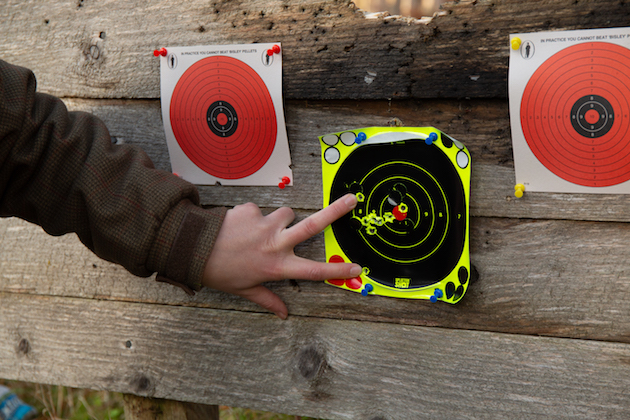
The non-toxic bullets grouped very impressively
Less damage with lead alternatives for deer
As an interesting aside, having inspected carcases afterwards in the larder, I discovered there was far less damage to muscle and obviously no lead fragments. From a food handling perspective, this is clearly a good thing.
In Scotland at least, deer management is at the forefront of many minds, the publication of the deer working group report at the start of the year caused a stir (News, 5 February).
Interestingly, the issue of the suitability of smaller rounds such as .243 for red deer is one the review panel recommends SNH re-examine — perhaps changing the legal bullet weight to take account of the different bullet size.
There is no getting way from the fact that copper is a pricier option. However, this is the direction we are travelling in and I believe we’ll see an increased movement away from lead in the coming years — predominantly driven by the venison market – with new lead alternatives for deer stalking.
I’m comfortable in saying that the kit works and more than delivers. As a friend said to me recently: “It’s less about the calibre of the rifle, and more the calibre of the person behind it that matters.”
I know this debate is one that stirs people up but we need to be realistic. With diminishing hunter numbers, a battle to garner public understanding — let alone support — and intense social media pressure, there are times we need to seize the easy wins.
Making the change to monolithic bullets – lead alternatives for deer – is going to be one of them.
Related Articles
Get the latest news delivered direct to your door
Subscribe to Shooting Times & Country
Discover the ultimate companion for field sports enthusiasts with Shooting Times & Country Magazine, the UK’s leading weekly publication that has been at the forefront of shooting culture since 1882. Subscribers gain access to expert tips, comprehensive gear reviews, seasonal advice and a vibrant community of like-minded shooters.
Save on shop price when you subscribe with weekly issues featuring in-depth articles on gundog training, exclusive member offers and access to the digital back issue library. A Shooting Times & Country subscription is more than a magazine, don’t just read about the countryside; immerse yourself in its most authoritative and engaging publication.






